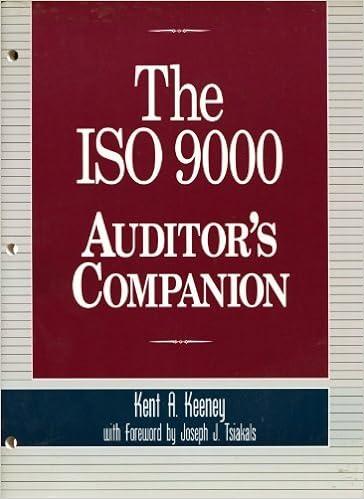Please answer the three questions (below) according to the case (with enough information and explanation).

4. Now consider the effect of income taxes. a. Suppose the Assembly Division is located in a state that imposes a 10% tax on income earned within its boundaries and the Engine Division is located in a state that imposos no tax on income earned within its boundaries. What transfer price would be chosen by the San Ramon Corporation to mini- mize state income tax payments for the corporation as a wholo? Assume that only transfer prices that are greater than or equal to full manufacturing cost and less than or equal to the market price of "substantially similar" engines are acceptable to the tax authorities. b. Suppose that the San Ramon Corporation announces the transfer price computed in requirement 4a to price all transfers between the Engine and Assembly Divisions. Each division manager then acts autonomously to maximize division operating income. Will division managers acting in a decentralized manner achieve the actions determined to be optimal in requirement 1? Explain 5. Consider your responses to requirements through 4 and assume the Engine Division will continue to have opportunities for outside business as described in requirement 1. What transfer pricing policy would you recommend San Ramon use, and why? Would you continue to evaluate division perfor- mance on the basis of division operating incomes? Explain. Get Connected: Cost Accounting in the News Go to www.prenhall.com/horngren costize for additional online exercises) that explore issues affecting the accounting world today. These exercises offer you the opportunity to analyze and reflect on how cost accounting helps managers make better decisions and handle the challenges of strategic planning and implementation CHAPTER 22 Case INFORMATION SYSTEMS CORPORATION: Transfer Prices and Goal Congruence Information Systems Corporation makes computer systems and has high interdependence among its profit centers. Inter- divisional transfers are made at full cost plus a profit margin. The Semiconductor Division produces random access memories (RAM) for ultimate consumption by several product divisions. Approximately 75% to 80% of the plant's total annual output consists of standard RAMs that product divisions can purchase either from the Semiconductor Division or from exter nal suppliers in the United States and abroad. Unique, propri- etary RAMs used in selected products comprise 20-25% of the plant's annual output. These RAMs can only be purchased from the Semiconductor Division Until five years ago, the Semiconductor Division supplied all the company's requirements for RAMs. But five years ago it was necessary, despite continued plant expansion, to purchase RAMs from external suppliers to meet demand. Non-U.S. com- panies entered the U.S. market with high-quality products and aggressive pricing. In a short time, market prices for many RAMs were at or below the Semiconductor Division's costs. The manager of each product division is evaluated as a profit center. Product-division managers have considerable autonomy in choosing where to buy the components they use in their prod- ucts. Not surprisingly, these managers began purchasing compo- nents from external suppliers rather than pay more for the higher- cost RAMs produced internally by the Semiconductor Division The Semiconductor Division has unused capacity. Manu- facturing costs are primarily fixed. As production decreased, these fixed costs were spread over fewer production units, resulting in higher costs and transfer prices for RAMs. In response, more prod- uct-division managers sought external suppliers, and so it went The Semiconductor Division began to focus on cutting its fixed costs to remain cost competitive. It began to increase productivity significantly, to reduce indirect human resources, and to control spending. The plan was to reduce its cost of RAMs from $25 to around $10 over a three-year period. This plan would be difficult to achieve if the demand for RAMs produced by the Semiconductor Division declined or if the planned cuts in fixed costs were not made. In this case, the higher cost per RAM would be passed along to the product divi- sions when the RAMs were transferred at actual cost. In com- mitting to buy RAMs from the Semiconductor Division, a prod. uct-division manager did not have any guarantee that the cost and price would not increase later if planned volumes did not materialize or if the plant was unable to meet its cost objectives The Semiconductor Division manager, recognizing this dilemma, asked the financial staff to recommend a different sys- tem for interdivisional transfers. He wanted this new system, at a minimum, to convey to its internal customers the steps the division was taking on cost control and productivity and to indi- cate a commitment to lower prices. The financial staff noted that many external suppliers did for ward pricing--that is, they set prices not on the basis of current costs but rather on the basis of what they expected future costs to be. The prices that vendors offered were firm commitments, regardless of their own costs to produce RAMs. The prices and margins did, of course, vary with the type of RAM lower for standard products and higher for specialized products). QUESTIONS CHAPTER 22 1. Why are the plant's costs for semiconductors higher than competitors' market prices? 2. What alternatives could the controller recommend to the general manager for interdivisional transfers? 3. What would you recommend as an appropriate transfer pricing method? 790







